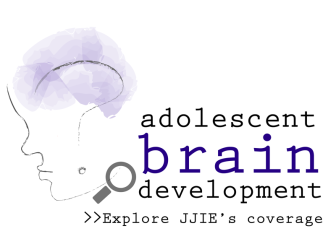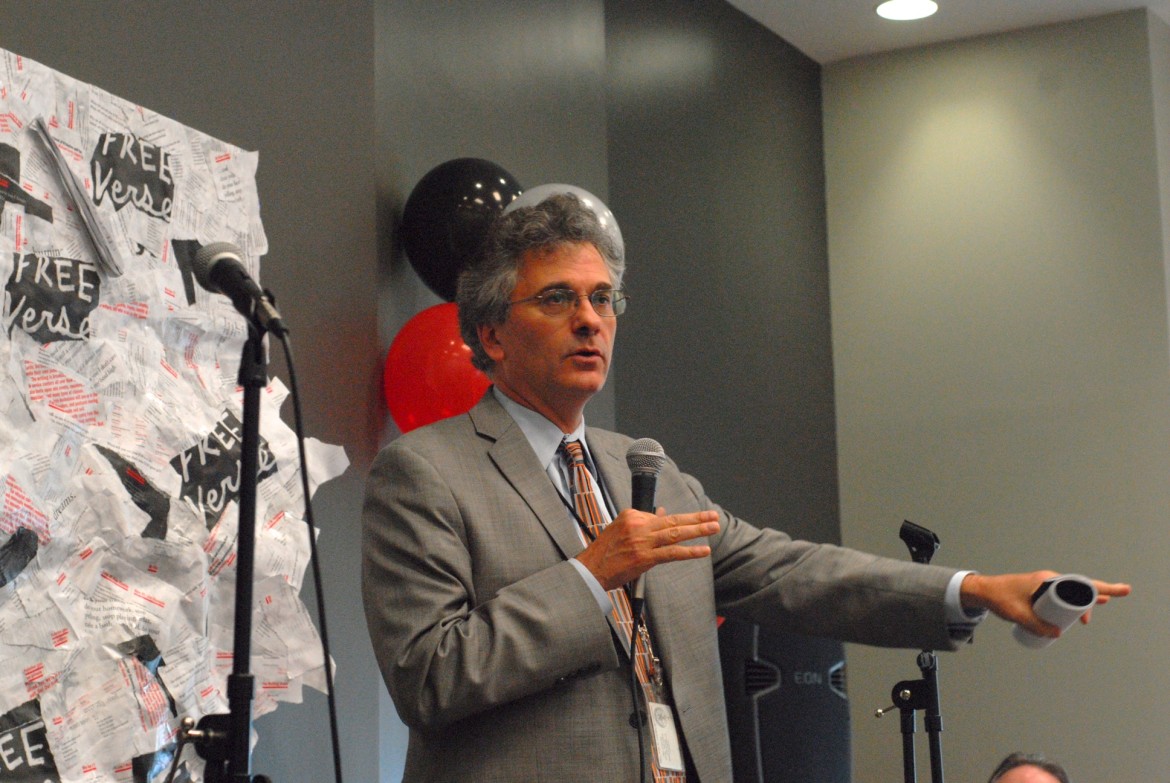
Gwen McClure / JJIE
Vincent Schiraldi, senior adviser in the New York Mayor’s Office of Criminal Justice.
PHILADELPHIA – Groundbreaking research in recent years clearly shows major brain development continues until about age 25, and, in many respects, young people tend to think and behave more like adolescents than adults until they reach that age.
So why does the U.S. criminal justice system continue to treat these young people as if they’re fully developed adults?
Experts pondered that provocative question Wednesday at a workshop at the Juvenile Detention Alternatives Initiative Inter-Site conference here.
Participants in the workshop — titled “Young Adult Justice: Is it Time for a New System?” — suggested it may be time to change existing age divisions and enable older youths and young adults to be treated differently than older adults.
Vincent Schiraldi, a senior adviser in the New York Mayor’s Office of Criminal Justice, has emerged as a leader in a fledgling effort that he hopes could ultimately lead to changes in the way New York City’s criminal justice system treats the older youths and young adults.
 Speaking at the workshop, Schiraldi, a longtime juvenile justice reformer, said of older youths and young adults: “They are essentially more neurologically and behaviorally similar to true juveniles … than they are to fully mature adults.”
Speaking at the workshop, Schiraldi, a longtime juvenile justice reformer, said of older youths and young adults: “They are essentially more neurologically and behaviorally similar to true juveniles … than they are to fully mature adults.”
Bruce Western, a Harvard University sociology professor who also spoke at the workshop, showed a PowerPoint presentation about young adult brain development and the effects of trauma on brain development.
Western noted the brain grows and develops through early adulthood. Right before puberty, a growth spurt occurs in the frontal lobe, responsible for planning, reasoning and impulse control.
Research has shown youths’ brains are not fully developed, and they’re more susceptible than adults to peer pressure, more impulsive, more likely to take risks, less likely to consider long-term consequences and more amenable to rehabilitation.
“Adolescence is a period of incredible turbulence in people’s lives,” Western said. “It seems antisocial behavior peaks at 16 or 17 and declines through young adulthood.”
But demographic trends have delayed traditional stabilizing influences in young people’s lives, he said, noting they’re marrying later or not at all and moving into steady employment later.
In his book “Punishment and Inequality in America,” Western showed the direct link between involvement in the prison system — disproportionately affecting youths of color — and diminished economic prospects for former inmates, who had much lower wages and employment rates than those without criminal records.
Schiraldi is working with Western on research about treatment of older youths and young adults in the criminal justice system in New York City.
Speaking of these young people, Schiraldi said: “They’re the least culpable and most malleable people left in the adult system.”
In an interview, Schiraldi stressed that he does not envision a new system for these young people or expanding the juvenile justice system to include them.
He said new specialty courts for young people might emerge that would include more resources aimed at rehabilitating them and involve stakeholders trained in relevant developmental issues.
But Schiraldi said potential changes in New York could be more focused on “putting a developmental lens on the current adult system.”
He said that could eventually lead to:
- A probation system that establishes specialized programs designed for older youths and young adults. (This could be similar to such a program operating in San Francisco.)
- Incarceration for young people that establishes separate facilities and includes more programming, including enhanced mental health and trauma assessments, workforce development and a chance to continue with education.
- “Risk assessments” that focus on the needs of these youths and recognize greater potential for change among them.
- Pre-trial programs that include supervision from mentors, family and community members.
- Alternatives to incarceration that address underlying issues and build on “life skills.”
- Expanded confidentiality protections to reduce “collateral consequences” like difficulty getting work or housing because of a conviction.
- Sealing of records or expungement after a crime-free period.
Schiraldi pointed out that international treaties and conventions, including the United Nations’ juvenile justice standards, urge that older youths and young adults be treated in the criminal justice system differently than older adults.
He said about 20 of 35 European countries surveyed had specific rules concerning these youths in either juvenile or general penal law, and 49 percent had penalty mitigation for young adults, while only seven countries had no rules particular to young adults.
Schiraldi showed a PowerPoint presentation with examples:
- In Germany, all young adults ages 18-21 are tried in juvenile courts, where judges have the option of sentencing them according to juvenile law if “moral and psychological” development resembles that of a juvenile. That country’s Supreme Court has ruled that a young adult has the maturity of a juvenile if his personality is still developing. (Young adults undergo an assessment that examines their personality and social environment.)
- In Sweden, young adults can be treated by the courts as juveniles until they reach age 25, and for all youths under 21, age is a mitigating factor and statutory minimum sentences don’t apply. Those under 21 can be sentenced to youth service for 20 to 150 hours instead of receiving a fine or imprisonment of up to one year. Young adult offenders in the country undergo a “social inquiry report” to determine whether they need social services.
- In Finland, all offenders under 21 serve their sentences in a juvenile prison, where they’re eligible for release after completing a third of their sentence. The system emphasizes education and vocational training.
- In the Czech Republic, a sentence is reduced by 25 percent if a defendant is close to the juvenile age range, and some of the educational components available to juveniles can also be accessed young adults.
Financial supporters of The JJIE may be quoted or mentioned in our stories. They may also be the subjects of our stories.

I believe that the policies and approaches that some advocates support for youth, including young adults, can be applied to offenders of any age.